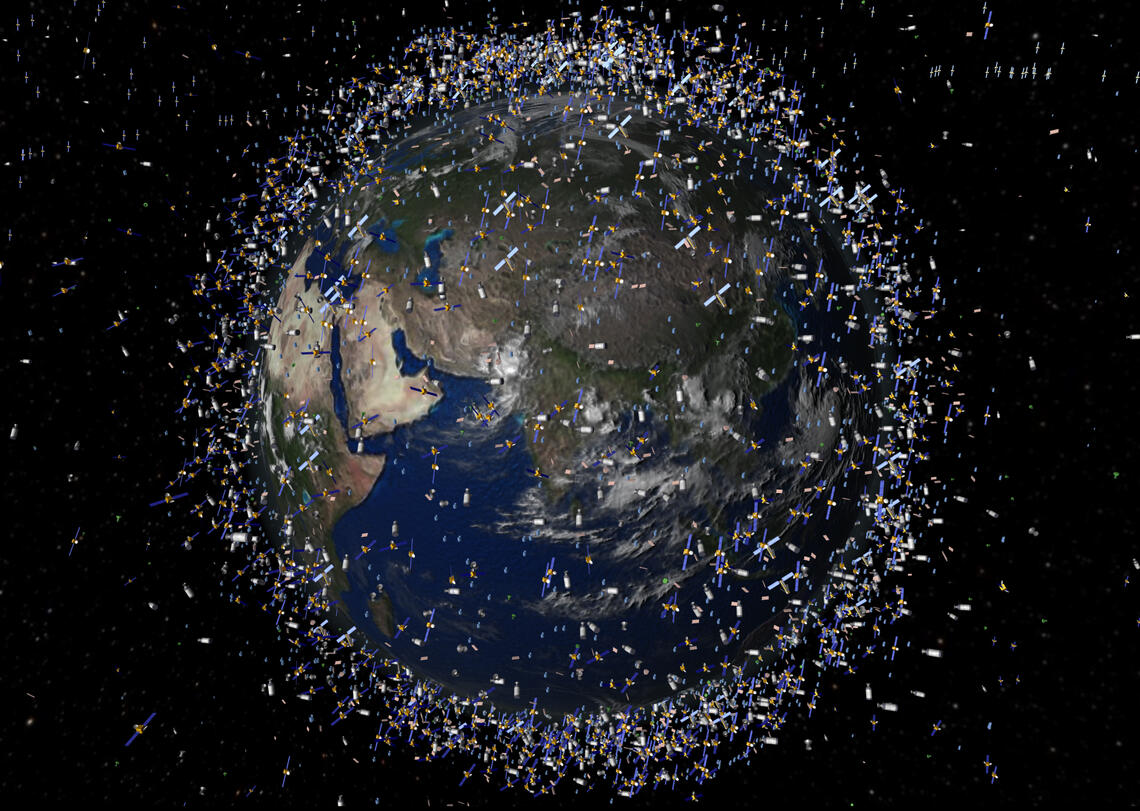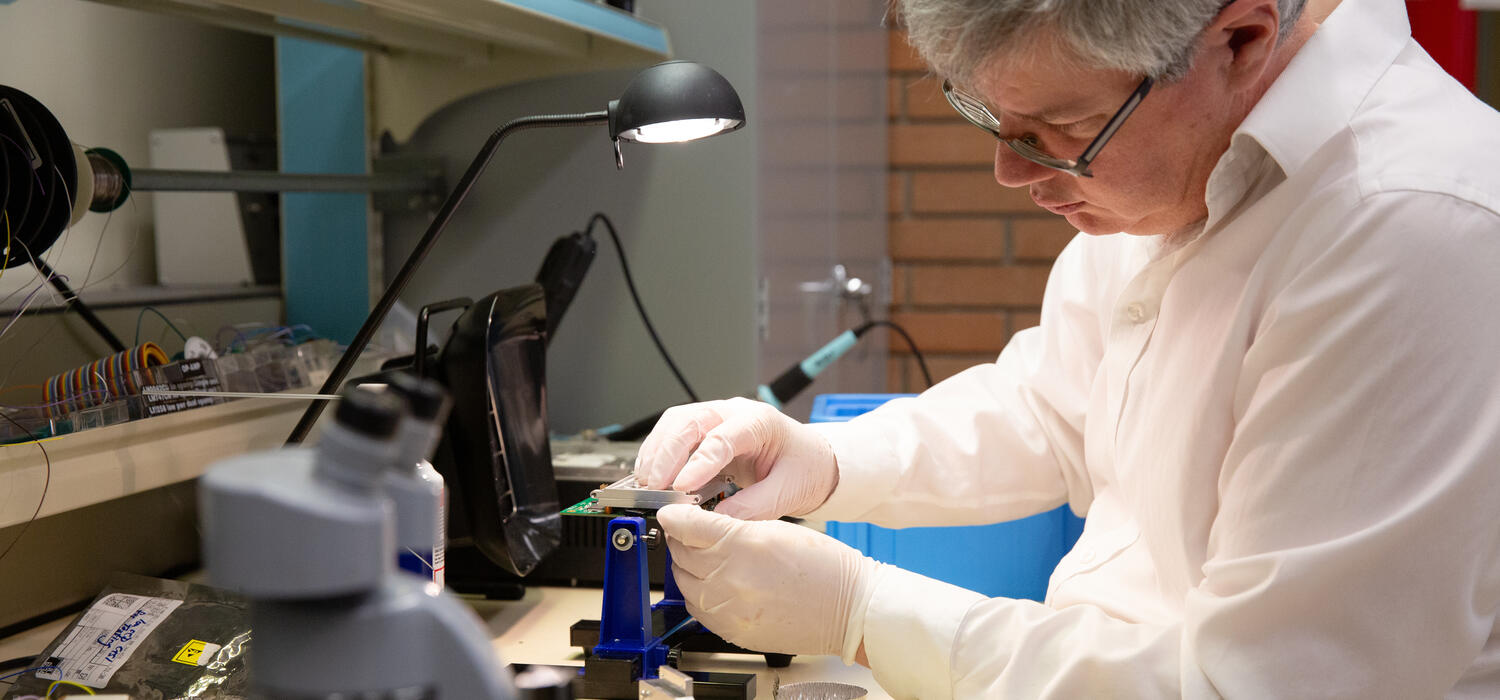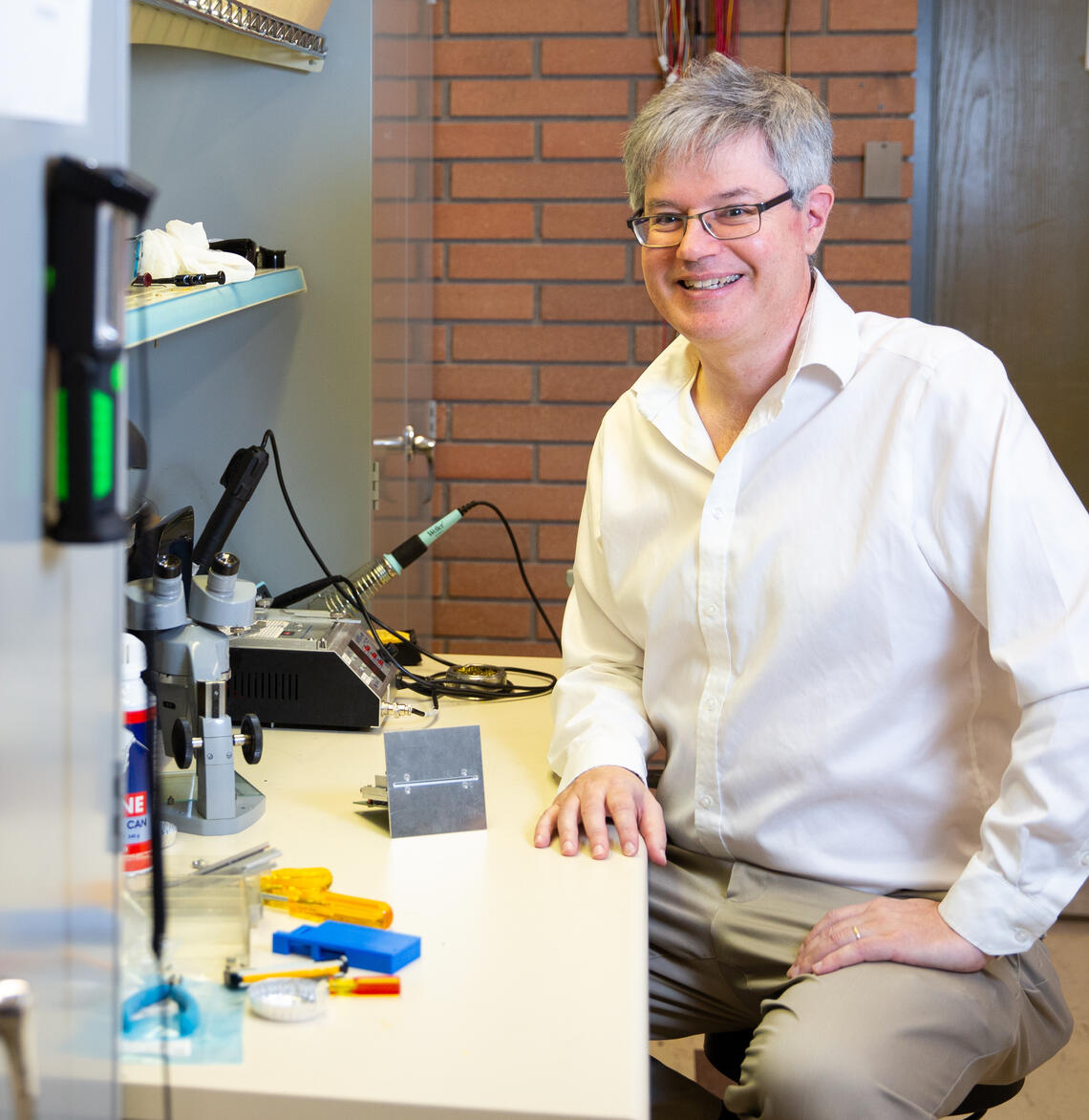
An artist's impression of the debris in space. The size of the debris is exaggerated as compared to the Earth.
Illustration European Space Agency
Oct. 18, 2023

We all think about the garbage on earth, piling up in our waste bins and eventually ending up in landfills. But what if we looked up at the night sky and thought about all the garbage orbiting around space?
It’s not exactly the kind of garbage we think of down here on Earth, but “space debris” is a growing threat to global communication systems and space exploration. Over 27,000 pieces of orbital debris are tracked by the Space Surveillance Network, yet there’s over 170 million smaller pieces that cannot be tracked that also pose catastrophic collision risks.
Although debris is usually tiny — old pieces of satellites or rockets — they have an enormous amount of energy and can tear through spacecrafts causing extensive damage and, in a vicious cycle, create even more space debris.
Earlier this month, the U.S. government issued its first-ever fine for space debris to a TV company that failed to properly dispose of a satellite.
There is no doubt about it: space is getting congested with waste, just like Earth.
Now, UCalgary researcher Dr. Johnathan Burchill, PhD, is part of an international collaboration researching how a group of tiny satellites — called a “swarm” — can take new measurements in the earth’s upper atmosphere, called the ionosphere. With these missing set of measurements scientists will be able to more accurately predict and prevent satellite and debris collisions.
“Sometimes there’s a collision of one satellite with the other. That's when you get these tiny pieces of debris.” says Burchill, a manager of research projects and adjunct associate professor in the Department of Physics and Astronomy.
“A little piece of scrap metal can hit a satellite and absolutely shred it. With less debris, it will be safer to operate satellites and send people into space.”

An artist's impression of the debris in space. The size of the debris is exaggerated as compared to the Earth.
Illustration European Space Agency
Earlier this year, the European Space Agency (ESA) held an open call for innovative ideas for new mission concepts using swarms of what are called “CubeSats”: square-shaped miniature satellites, roughly the size of Rubik's cubes and weighing about one kilogram. Compared to a traditional satellite, (which can be larger than a car) CubeSats are quick and cheap to produce while still having the ability to carry many instruments on board.
The ESA received over 60 applications for their open call. Seven ideas were selected based on an evaluation by a panel of ESA experts, who scored the ideas on their novelty, technological feasibility, and the relevant experience of the submission team. Burchill’s team, which is led by the University of Warwick, was one of the seven teams to receive funding to prove their concept is feasible.
The concept behind Revealing the Orbital and Atmospheric Responses to Solar activity (ROARS) is to launch eight CubeSats into the Ionosphere, about 500 km above the Earth. The multiple satellites will feature the latest atmospheric and magnetic field sensors, state-of-the art global navigation satellite systems (including GPS) and inter-satellite laser communications.
Burchill has a concept for one of the instruments that would measure ionospheric winds. Much of this work is possible through Alberta’s Major Innovation Fund through the Space-Defense Technologies Alberta program.
“If I can prove the detector that I develop could be used for the mission, Canada could competitively apply to provide one of the key instruments and our country could be a big player,” says Burchill.

Johnathan Burchill
Burchill used a simple analogy to describe the importance of sending a swarm of satellites into space, instead of just one, which is more typical in scientific missions.
“Imagine a weather forecaster on the news and they only had one thermometer,” he says. “They would wake up in Newfoundland, and they would take the temperature, and then they would fly to Halifax, to Montreal, to Toronto, all the way out west. It just wouldn’t be very useful for people, would it?
“But space is much, much bigger, and we typically have a single set of measurements on one satellite flying around. If you can add more measurements, we can have a much better picture of the state of the atmosphere.”
If the ROARS proposal moves from idea to reality, which Burchill is very much hoping it does, this would be the largest swarm of scientific satellites to ever fly in this region of the atmosphere.
The ROARS scientific team will investigate how satellite “drag” is affected by solar activity and space weather. When solar storms interact with the Earth’s magnetic field, they can heat our upper atmosphere and alter a spacecraft’s trajectory. Burchill likens the drag of a satellite to the resistance you feel while riding a bike.
“The air is really thin up there, but the satellite is moving really fast, around seven to eight thousand metres per second. A satellite would cross the city of Calgary in two seconds. And you know from experience, that the faster you move on a bike, the more you feel the wind,” Burchill says.
Burchill’s goal is to understand how space weather affects satellite drag and the lifetime of a satellite. The more drag the satellite has, the quicker it will spiral toward the earth and burn up.
Burchill and the ROARS team now have one year to demonstrate that their project is technically feasible. The ESA will then choose one or two teams to move forward and build a demonstration satellite, and if that’s successful, it’s time to build the real satellites. If ROARS is chosen, the full mission would launch in 2029.
For Burchill, this project is more than just a scientific mission. It’s about a sense of exploration. It’s about discovery. It’s about understanding the physics of the unknown.
“I just love exploring nature, that’s where I’m coming from,” says Burchill. “My expertise is in flying stuff into space to see what’s out there and trying to understand the physics of it. We have the possibility of making new measurements that have never been made before. As a scientist, that’s what I get really excited about.”
Johnathan Burchill’s work on the ROARS project is funded through the ESA and Alberta’s Major Innovation Fund. The ROARS mission is collaboration of 26 institutions from across nine countries and is led by the University of Warwick, with the University of Calgary as a major contributor.